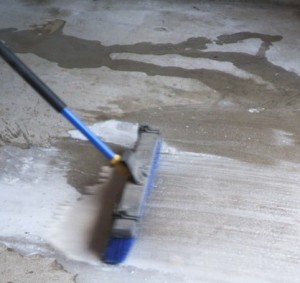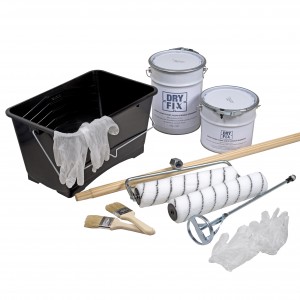News
How To Apply a Liquid Damp Proof Membrane Correctly
Preparation Of Surface
There is one key requirement to the successful application of a liquid membrane and that is the preparation of the surface area to be painted.
Most liquid membranes dry to form a film. Certain brands offer a flexible quality called elastomeric. A film will only work effectively if it fully bonds to the surface it is applied to.
 All manufacturers application guides will refer to the preparation process prior to application and due to the fact we actually get to use the products we supply we can offer our own preparation guides.
All manufacturers application guides will refer to the preparation process prior to application and due to the fact we actually get to use the products we supply we can offer our own preparation guides.
The first job is to make the surface sound. If there are loose bits of screed, concrete, etc these should be broken out until the material is sound. The holes created should be filled with a suitable mortar which should be allowed to go off.
If there are hollows or uneven areas within the floor then if the finished liquid membrane such as an epoxy paint is to be left as the final finish it would be as well to even the hollows out so the floor is made fully level.
Once the floor is even it should be completely cleaned. Dust, dirt, oil, grease and other contaminants should be completely removed. Where oil and grease are present it should be treated with a degreasing agent several times to ensure it has been fully lifted.
Allow this treatment to work and wash down to leave a clean surface.
If not fully cleaned this will have an impact on the bonding process with the liquid membrane to the slab possibly resulting in re-application if not carried out properly.
Note that if drilling or hacking off plaster has been carried out in the area to be painted dust from these processes can linger in the air and continuously settle on the surface. Ahead of applying the first coat run a hoover across the area and run a mop or similar over the floor to pick up all the dust.
Bitumen Primer
If the floor is scaled or the material is porous subject to the product you are using, such as bitumen paint, you are recommended to apply a bitumen primer. This will help with the overall bonding process but also help achieve the target coverage rate for the bitumen paint.
Two Coat Application
Otherwise, a two coat application of Epoxy, Polymer or Polyurethane liquid membranes is always recommended.
Be mindful, in working out volumes, the first coat going straight onto a non-primed surface will most likely require more paint than is stated in the datasheet due to porosity of the surface, (acting like a sponge). Subsequently, the second coat goes down closer to the stated coverage rate.
Another factor in the application process is using the right application tools. It is easier to use a brush to work around the floor edges and cutting in. Thereafter we suggest a medium or long pile roller to work the main floor area. For large floor areas, without doubt, the use of our applicators kit is recommended. 
This applicator kit ensures good coverage of the floor area and in quicker time. The damp proof membrane will usually be touch-dry within one hour of application.
So in summary, the key to success for our range of liquid membranes when installing a damp proof membrane is; Preparation, Preparation, Preparation.
.



Hi. Ian Morrell.
How long does the SECOND coat of a Liquid Damp Proof Membrane take to dry on average before it can be walked on? I will be using the LDPM in a kitchen w2hich is obviously a frequently used room in a house, but I obviously don’t want to ruin the newly applied surface by walking on it too quickly after application.
Ian Morrell
Hi Ian,
Drying time of any brand and type of liquid DPM varies according to the application circumstances, e.g. middle of a baking hot day in summer applied to a dry and subsequently warm surface, would take between 4 – 6 hours per coat. Middle of winter under damp, cold and humid conditions could take 24 hours per coat.
In respect of walking directly over it. This precludes any brand of bitumen or latex polymer product as these need to have a finish over the top to protect it such as tiles, screed, floating floor, etc. To have a more heavy duty product suitable for walking on you would be advised to have a more commercial type of two part epoxy based floor paint.